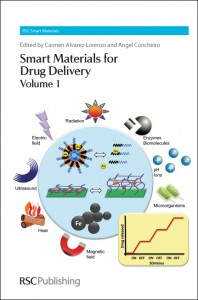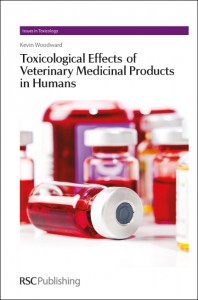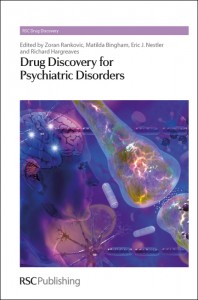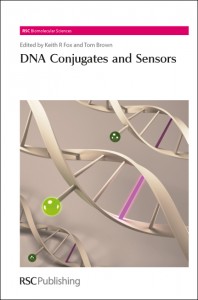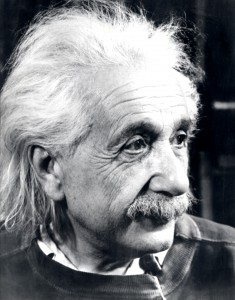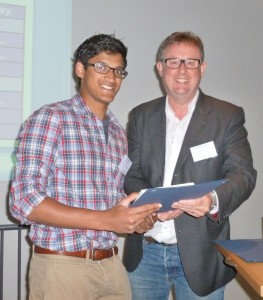
Poster prize judge Andy Davis presents Madura Jayatunga, from the University of Oxford, with a RSC Drug Discovery book prize at the RSC Medicinal Chemistry Summer School
It has been a busy month for medicinal chemistry publications in the Royal Society of Chemistry Books office, with three interesting and informative new scholarly books being published.
Successful Strategies for the Discovery of Antiviral Drugs, edited by Manoj C Desai and Nicholas A Meanwell, and Comprehensive Biomarker Discovery and Validation for Clinical Application, edited by Peter Horvatovich and Rainer Bischoff, were both published in early June, followed just a week later by Dendrimers in Biomedical Applications, edited by Barbara Klajnert, Ling Peng and Valentin Cena.
The 2013 RSC Medicinal Chemistry Summer School was held at Loughborough University on the 17-21st June. A poster session was held for the first time and expertly judged by Roger Griffin and Andy Davis, editor of the forthcoming RSC book The Handbook of Medicinal Chemistry, to be published in 2014. The winners won either a years’ subscription to MedChemComm or a Royal Society of Chemistry book from the RSC Drug Discovery Series.
I recently attended the European Association of Poisons Centres and Clinical Toxicologists (EAPCCT) Annual Congress in Copenhagen. The congress saw excellent contributions on a wide range of topics from delegates travelling from across the globe. I will also soon be attending International Conference on Bioinorganic Chemistry (ICBIC 16) to be held in Grenoble, France from the 22nd-26th July.
Finally, I would like to mention the RSC/BMOS Young Investigator Award. Awards will be allocated to four outstanding researchers (two from the UK and two from Latin American) to attend the highly awaited 15th Brazilian Meeting on Organic Synthesis (10-13 November 2013) which includes lectures from leaders in the field covering new and emerging aspects of organic synthesis. Please visit the website for more information and to apply: http://rsc.li/bmos15. The closing date for entries is the 15th July 2013.
If you have an idea for a book or you would like to find out more about the RSC Drug Discovery, Issues in Toxicology or RSC Metallobiology Series please contact the medicinal chemistry Commissioning Editor, Cara Sutton.
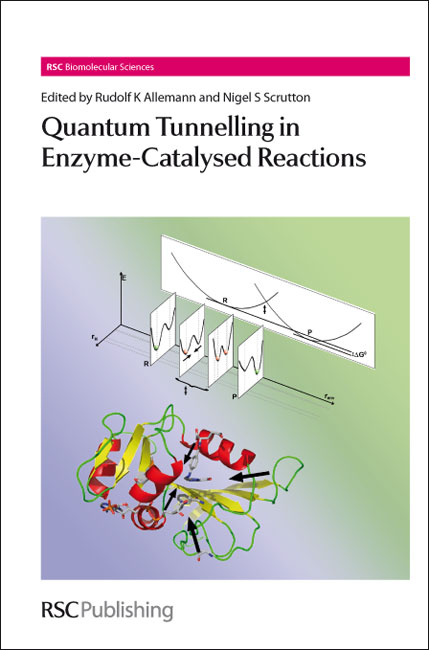 RSC Books would like to congratulate Martin Karplus, Michael Levitt and Arieh Warshel, who have today been jointly awarded the Nobel Prize for Chemistry. The researchers have been awarded the prestigious prize for their work in the development of multiscale computational models for complex chemical systems.
RSC Books would like to congratulate Martin Karplus, Michael Levitt and Arieh Warshel, who have today been jointly awarded the Nobel Prize for Chemistry. The researchers have been awarded the prestigious prize for their work in the development of multiscale computational models for complex chemical systems.











